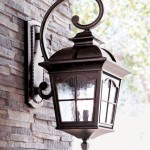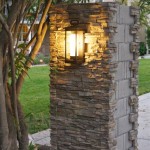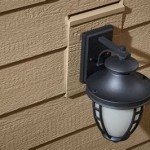Outdoor Dining Area Lighting Design: Illuminating Al Fresco Experiences
Outdoor dining areas have evolved from simple patios with a table and chairs to sophisticated extensions of the home, offering spaces for relaxation, entertainment, and communal meals under the open sky. A crucial element in transforming these spaces into inviting and functional environments is carefully planned and executed lighting design. Effective outdoor dining area lighting not only enhances the aesthetic appeal of the space but also ensures safety, comfort, and usability after sunset. This article explores the critical considerations and techniques involved in designing optimal lighting for outdoor dining areas.
Understanding the Purpose of Outdoor Dining Area Lighting
The primary function of outdoor dining area lighting is to create a welcoming and functional environment that extends the usability of the space into the evening hours. This involves balancing several key factors. First, the lighting must provide sufficient illumination for tasks such as seeing food, beverages, and fellow diners clearly. Overly dim lighting can make it difficult to navigate the space and enjoy a meal, while excessively bright lighting can be harsh and uncomfortable, detracting from the overall ambiance.
Second, outdoor lighting should contribute to the desired atmosphere of the space. Different lighting schemes can evoke varying moods, from intimate and romantic to lively and festive. The selection of lighting fixtures, their placement, and their color temperature all play a role in shaping the overall ambiance. A soft, warm glow can foster a relaxed and intimate dining experience, while cooler, brighter light can be more appropriate for casual gatherings or parties.
Third, safety is a paramount consideration in outdoor lighting design. Well-placed lighting is essential for illuminating pathways, steps, and other potential hazards, reducing the risk of accidents and injuries. Sufficient lighting around the perimeter of the dining area can also enhance security by deterring intruders.
Finally, energy efficiency and sustainability are increasingly important considerations in outdoor lighting design. Selecting energy-efficient lighting technologies, such as LED fixtures, and implementing smart lighting controls can significantly reduce energy consumption and minimize the environmental impact of outdoor lighting.
Key Lighting Techniques for Outdoor Dining Areas
Several lighting techniques can be employed to create effective and aesthetically pleasing outdoor dining area lighting. These techniques often work best in combination, layering different types of light to achieve the desired effect.
Ambient Lighting: Ambient lighting provides overall illumination for the space, creating a base level of light that allows people to see and move around safely. Common sources of ambient lighting in outdoor dining areas include string lights, pendant lights, and recessed lighting. String lights, draped across a pergola or strung between trees, can create a festive and inviting atmosphere. Pendant lights, hung above the dining table, provide focused illumination and add a touch of elegance. Recessed lighting, installed in an overhead structure, offers a clean and unobtrusive source of ambient light.
Task Lighting: Task lighting provides focused illumination for specific activities, such as dining, grilling, or reading. In an outdoor dining area, task lighting is primarily focused on the dining table itself. Options include overhead pendant lights, portable table lamps, and candle lanterns. Dimmer switches can be used to adjust the brightness of task lighting, allowing for flexibility in creating the desired ambiance.
Accent Lighting: Accent lighting highlights specific features of the outdoor dining area, such as architectural details, landscaping elements, or artwork. This type of lighting adds visual interest and depth to the space. Common sources of accent lighting include spotlights, uplights, and path lights. Spotlights can be used to highlight trees, shrubs, or architectural features. Uplights, placed at the base of walls or columns, can create a dramatic effect. Path lights, installed along walkways and garden paths, provide safety and guidance while also enhancing the aesthetic appeal of the landscape.
Decorative Lighting: Decorative lighting adds a touch of personality and style to the outdoor dining area. This type of lighting is primarily aesthetic, serving to enhance the overall ambiance of the space. Examples of decorative lighting include lanterns, candles, and fairy lights. Lanterns, placed on tables or hung from trees, can create a warm and inviting glow. Candles, in a variety of sizes and styles, add a touch of romance and intimacy. Fairy lights, strung along railings or woven through foliage, create a whimsical and enchanting effect.
When combining these lighting techniques, it's important to consider the balance between brightness, shadow, and color temperature. Too much light can create a harsh and unflattering effect, while too little light can make the space feel dark and uninviting. Shadows add depth and dimension to the space, but excessive shadows can make it difficult to see and navigate. Color temperature refers to the warmth or coolness of the light emitted by a fixture. Warmer color temperatures (around 2700K) create a cozy and inviting atmosphere, while cooler color temperatures (around 4000K) are more energizing and modern.
Selecting the Right Lighting Fixtures
Choosing the right lighting fixtures is crucial for achieving the desired lighting effect and ensuring the longevity and durability of the outdoor lighting system. Several factors should be considered when selecting lighting fixtures for an outdoor dining area.
Weather Resistance: Outdoor lighting fixtures must be able to withstand the elements, including rain, wind, sun, and temperature fluctuations. Look for fixtures that are specifically designed for outdoor use and have a high IP (Ingress Protection) rating. The IP rating indicates the degree of protection against solid objects (such as dust) and liquids. A rating of IP44 or higher is generally recommended for outdoor fixtures.
Material: The material of the lighting fixture should be durable and resistant to corrosion. Common materials for outdoor lighting fixtures include aluminum, stainless steel, copper, and brass. Aluminum is lightweight and rust-resistant, making it a popular choice for outdoor fixtures. Stainless steel is highly durable and resistant to corrosion, but it can be more expensive than aluminum. Copper and brass develop a natural patina over time, adding a touch of character and charm to the outdoor space.
Style: The style of the lighting fixture should complement the overall design of the outdoor dining area. Consider the architectural style of the house, the landscaping design, and the furniture style when selecting lighting fixtures. Choose fixtures that blend seamlessly with the surrounding environment and enhance the overall aesthetic appeal of the space.
Light Source: The light source is a critical component of the lighting fixture. LEDs (Light Emitting Diodes) are the most popular choice for outdoor lighting due to their energy efficiency, long lifespan, and versatility. LEDs consume significantly less energy than traditional incandescent or halogen bulbs and can last for tens of thousands of hours. They are also available in a wide range of color temperatures and brightness levels, allowing for precise control over the lighting effect. Other light source options include halogen bulbs and compact fluorescent lamps (CFLs), but these are less energy-efficient and have a shorter lifespan than LEDs.
Brightness and Color Temperature: The brightness and color temperature of the light source should be appropriate for the intended use of the lighting fixture. For ambient lighting, choose fixtures with a medium brightness level and a warm color temperature (around 2700K). For task lighting, choose fixtures with a higher brightness level and a slightly cooler color temperature (around 3000K). For accent lighting, choose fixtures with a brightness level that is appropriate for highlighting the specific feature being illuminated. Experiment with different color temperatures to find the perfect balance for the outdoor dining area.
Smart Lighting and Controls: Integrating smart lighting controls can significantly enhance the convenience and functionality of outdoor lighting. Smart lighting systems allow users to control the brightness, color temperature, and timing of the lights remotely, using a smartphone or tablet. Motion sensors can be used to automatically turn on lights when someone enters the area, providing added security and convenience. Timer switches can be used to automatically turn on and off lights at pre-set times, conserving energy and extending the lifespan of the bulbs.
Ensuring Safety and Compliance
Safety is paramount when designing and installing outdoor lighting. Adhering to electrical codes and safety standards is essential for preventing accidents and ensuring the longevity of the lighting system.
Electrical Codes: Outdoor lighting installations must comply with all applicable electrical codes and regulations. These codes specify the requirements for wiring, grounding, and weatherproof connections. Consult with a qualified electrician to ensure that the installation meets all applicable codes and regulations. Improper wiring or grounding can create a serious electrical hazard.
Weatherproof Connections: All electrical connections must be weatherproof to prevent water damage and corrosion. Use weatherproof connectors and junction boxes to protect wires and connections from the elements. Ensure that all connections are properly sealed and insulated.
Ground Fault Circuit Interrupters (GFCIs): GFCIs are essential for protecting against electrical shock in outdoor environments. GFCIs monitor the flow of electricity through a circuit and automatically shut off the power if they detect a ground fault. Install GFCIs on all outdoor electrical outlets and circuits to prevent electrical shock hazards.
Low-Voltage Lighting: Low-voltage lighting systems are a safer alternative to line-voltage systems, especially in areas where children or pets may be present. Low-voltage lighting systems operate at a lower voltage (typically 12 volts), reducing the risk of electrical shock. They also require less complicated wiring and are easier to install.
By carefully considering these factors and working with qualified professionals, a well-designed outdoor dining area lighting system can transform an outdoor space into a beautiful, functional, and safe environment for enjoying meals and gatherings under the stars. Good lighting extends the usability of any outdoor space and adds value to a home.

24 Backyard Lighting Ideas To Upgrade Your Patio

16 Outdoor Lighting Ideas For Backyards Extra Space Storage

Glowing Gatherings 25 Covered Patio Lighting Concepts Lightopia

19 Stylish Outdoor Lighting Ideas The Best Patio

8 Outdoor Kitchen Lighting Ideas Angi

6 Tips For Creating An Outdoor Luxury Living Space Niche Homes

21 Best Outdoor Lighting Ideas Easy Patio

Outdoor Dining Table Lighting Traditional Courtyard Los Angeles By Lenkin Design Inc Landscape And Garden Houzz

10 Best Outdoor Lighting Ideas Landscape Design Secrets

Lighting That Sparks Interest In Your Restaurant S Patio







